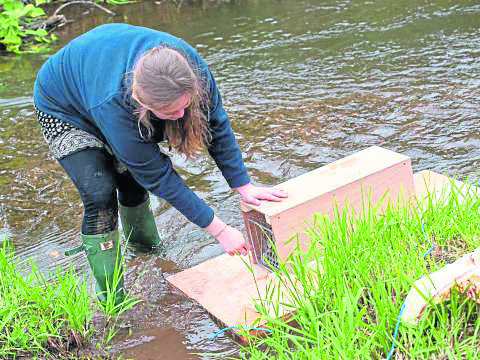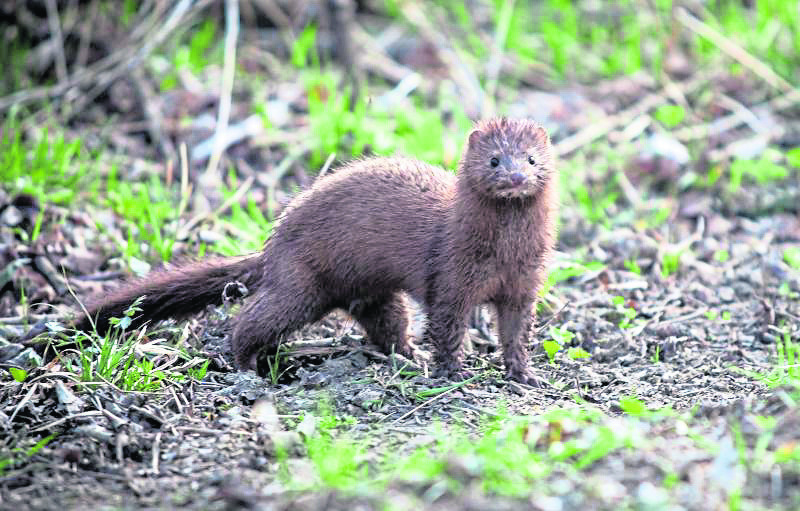A worrying surge in American mink is threatening native wildlife along the Caledonian Canal and River Ness.
The non-native creatures are causing havoc and the rise in numbers has sparked calls for volunteers to help eradicate them.
A major four-year project, led by Scottish Natural Heritage, is underway to trap the “opportunistic predator”, which have spread following escapes from fur farms in the latter half of the last century.
Chris Conroy, director of the Ness District Salmon Fishery Board, said: “We’re aware of an increase in the number of sightings of these invasive non-native animals in our area which is worrying.
“They are known to predation upon our native ground-nesting birds, water voles and fish. The rocky nature of the canal embankments and the banks of the River Ness provide perfect habitat for the American mink.
“They can move around between these rocks underground without being detected. Sightings peaked last month when the young mink disperse from their mothers and become more visible.”
The Scottish Invasive Species Initiative, a Heritage Lottery-funded project, is working to tackle the problem of the invasive American mink right across northern Scotland.
Chris Daphne, of the Ness and Beauly Fisheries Trust, who is leading the project locally, said: “The project aims to engage people and communities in the management of invasive species such as the mink.
“We have already recruited a network of volunteers across the area who help to monitor ‘mink rafts’ which are used to detect these creatures.
“This raft floats on the edge of a water course and has a wooden tunnel through which the inquisitive mink will be lured. A moist clay pad is in the tunnel and when the tell-tale prints of mink are found on these pads, a live capture trap is installed in the tunnel and once caught, the mink are humanely destroyed.”
Mr Daphne added: “Mink rafts are deployed in numerous locations across both the Ness and Beauly catchment, but unfortunately some of those in the Inverness area have been regularly vandalised.
“Our Trust is looking for more volunteers who would be willing to ‘adopt’ a mink raft – all you need to do is check it every two weeks for footprints.
“A good response of support from the public would certainly strengthen our efforts to combat the impacts of this semi-aquatic creature, which has clearly used the canal as a perfect thoroughfare connecting east and west coasts.”
An SNH spokeswoman said: “They have a devastating effect on our native wildlife as they’re an opportunistic predator, often killing more than they require for food.
“Together with a range of partners, we’ve set up the Scottish Invasive Species Initiative (SISI) to tackle the problem of invasive non-native species, including mink, alongside rivers and watercourses in northern Scotland.
“We’re already trapping mink along the Caledonian Canal and surrounding rivers but rely on the help of volunteers.”
Great escapists who live on birds, voles and fish
The American mink was imported to Scotland to be bred for their fur, initially in the 1920s and also in the 1950s, but many escaped from the farms and have now set up home in the wild across the north of Scotland.
The avid hunter targets ground-nesting birds, water vole populations and fish.
The mink is a semi-aquatic mammal with rich, usually dark brown fur, which belongs to the Mustelid family.
It occupies both freshwater and saltwater habitats and follow waterways, lake and loch edges and coasts.
SNH use monitoring rafts to establish if mink are present in an area. Once detected they are trapped and humanely despatched.
The mink monitoring raft was designed by the Game and Wildlife Conservation Trust.
The raft floats on the edge of a river or burn, and mink will invetigate and go through the wooden tunnel, leaving paw prints on clay.
SNH expect to deploy nearly 500 mink rafts across the region during the project.

